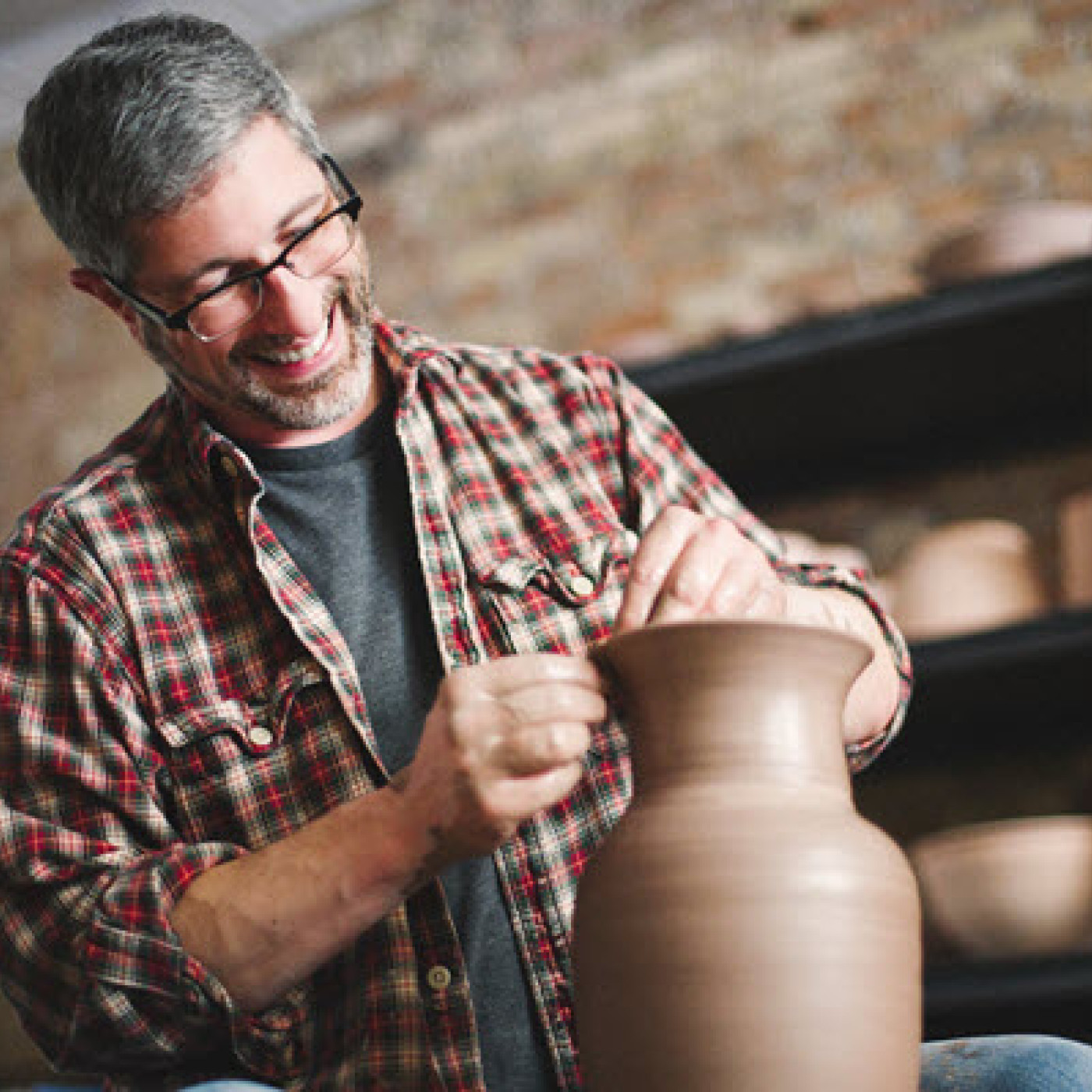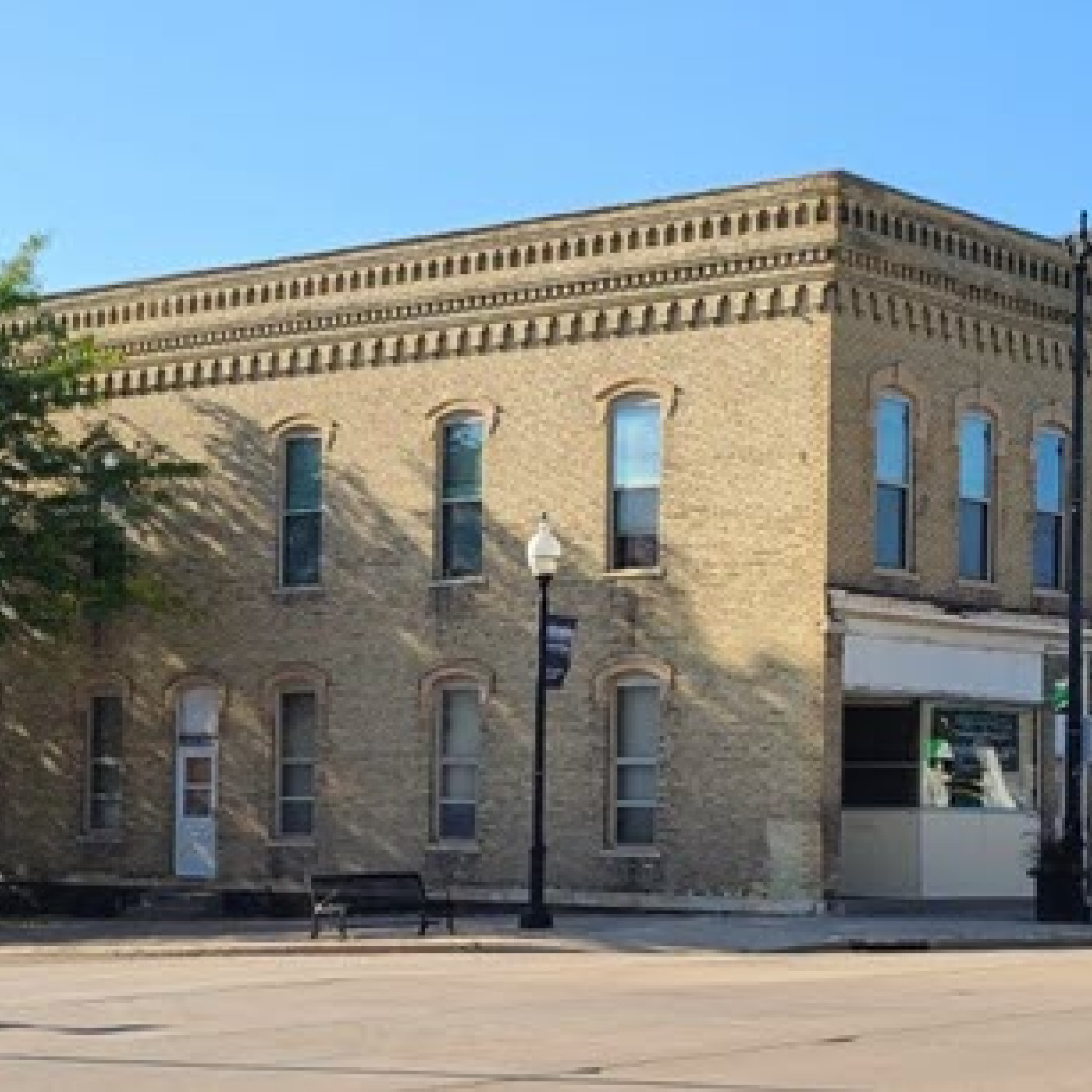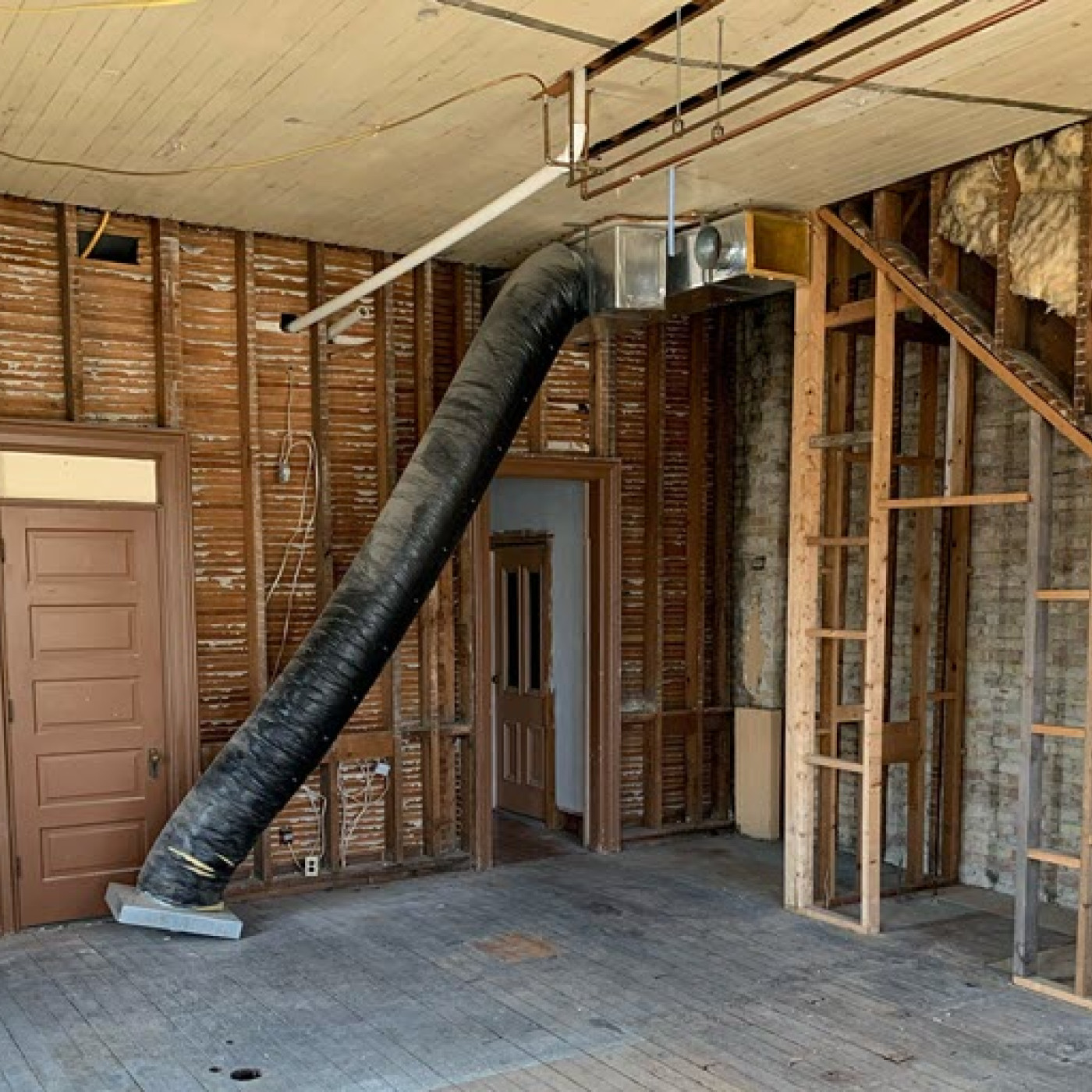Life on the Road Blog: From Law to Art
Potter to Chronicle Second Career in New Article Series
Becoming a full-time artist was something I never anticipated. As a politics major with a minor in history, I never took a single art class.
Law school was the natural next step (since no one takes you seriously when you are under 30 and there was time to kill), and, upon graduation, I practiced criminal defense (state, federal, and appellate) for about 18 years. For most of that time … still no art classes.
After practicing law for 12 years, I was pretty burned out and a good friend bought me my first art class — an open studio, one night per week, throwing class. It was just what the doctor ordered.
What I proudly thought were bowls coming off my wheel were really just big heavy doorstops. But it was fun. And relaxing. And rejuvenating.
But I was still too afraid to quit my day job. It was, after all, the only thing I knew how to do. Change is scary.

Photo courtesy of Camela Langendorf
An Awakening
In October 2014, while at the courthouse walking to my next hearing, I had a Transient Ischemic Attack (TIA) — essentially a mini-stroke. I felt hot, heavy, achy, and very weak. After about 10 minutes, I got up from the bench and went to my next court hearing.
At 44, “it must have only been a pinched nerve,” I thought. It couldn’t be serious. For the next week, I felt miserable, so I went to my doctor.
After he finished telling me I was an idiot for not coming in sooner, he began to talk about echocardiograms, dopplers, and brain MRIs (to those who are wondering, the MRI confirmed that I do, in fact, have one, and it mostly works).
That is when I decided that I was done with the law. My career was making me miserable for some time and now I knew that it was killing me too. I quit cold turkey. Now what?
Art was already starting to save my life without me even knowing it. Thanks to those classes, and many more I had been taking, I had progressed from doorstops to actual dishes.
While still practicing law, I was doing about eight to 10 art shows a year and creating my next chapter. It was time to go all-in.
Brick and Mortar
My first brick-and-mortar store and studio were in Racine, Wisconsin, right on Main Street. I bought an old 1869 building and with the help of my parents and friends, renovated the building and created my store and studio.
The business grew from this location. In addition to supplying pottery for several other small stores, as well as my own, I now do 30-35 mostly juried art shows every year throughout the upper Midwest (Wisconsin, Illinois, Minnesota, Michigan, Ohio, Indiana, and Kentucky).

Photo courtesy of Scott Obernberger
Beginning about a year ago, it was time to start the next chapter — relocating and rehabbing a “new” old building in beautiful Jefferson, Wisconsin. Located approximately 35 miles east of Madison on the Rock River, our new location provides more space for production and all the things a growing business needs — a great town, great people, and a great location.
Rehabbing a building built in the 1870s is not for the faint of heart. Everything from the basement to the roof is being addressed.
We are taking out walls to create an open concept studio space, preparing a kiln room for safe firings, and returning a store space to not only being functional space, but also in keeping with the design of its original era. Massive updates to the building itself (new roof, HVAC system, electrical, and plumbing), in addition to all the design issues, had to be planned for. First things first, however.

Photo courtesy of Scott Obernberger
Location Rules
When you are looking to build a store and studio, the location is critical. How do you pick the right place? Big city or small town? Urban or rural? What are you looking for in a location?
The best way to answer these questions is by developing your business model. Are you counting on foot traffic? Are store sales your bread and butter? Are you counting on show sales to make up the bulk of your gross sales? Do you do a significant amount of wholesale production?
Thinking about and developing your business model will answer these and most other questions.
If your business is dependent mostly on show sales and wholesale production, why pay premium for space by locating in a large urban area? You will get far more building at a far better price (not to mention a much more enjoyable lifestyle) if you look to smaller towns outside of large urban areas.
For me, looking to the “ex-urbs” was the right direction. Even though we are doing massive renovations on the building, total costs for the building and the renovations (which includes residential on the second floor) are a fraction of what purchasing or renting space in a city would run.
If you are an artist who focuses on shows, galleries, or wholesale production, look to small towns for your future. Small towns will not only provide you with a healthier, calmer lifestyle, they will often embrace you both individually and professionally.
Talk with the county economic development organization, the city hall, and the chamber of commerce of various towns that have potential. You will be amazed at how often they will work closely with you to not only find a location but also streamline the process of developing it and becoming part of the community.
Getting Involved
One of the most important lessons I’ve learned in the process is to talk to the leadership of the town and tell them what you want to do. They will become your best supporters in your endeavor and help guide you along the way.
It is always better to find out what the rules are in advance so that you can plan accordingly. By talking with civic leaders and including them in the planning, they will look for ways to help you become part of the community as well. Small towns want your business to thrive, as your success will help the town develop and grow as well.
Invest in your new community. Work with local businesses and hire them whenever you can to assist you in developing your business. Working collaboratively with our neighbors not only helps them but will help you to establish a positive reputation in your newly adopted hometown.
Make friends and connections with your new neighbors; the best way to develop your business is by reputation and word of mouth. Modern marketing is important, but relationships are still the most effective - and the most enjoyable - way to truly grow your business. Don’t forget to join your new community’s business and neighborhood organizations.
To successfully establish your business, you need to look at much more than the physical space of the business. Working with and getting to know your community is what will get your business off the ground and pave the way for real success.
Remember, success isn’t just measured financially. It is measured by the relationships you develop and how you can be an asset for your new community. By working together, everyone benefits.
About the Author
Scott Obernberger runs Twice Baked Pottery in Jefferson, Wisconsin. The former attorney will discuss his creative journey and the lessons he learns along the way in this column for Sunshine Artist. Learn more about Scott and his business at www.twicebakedpottery.com.
